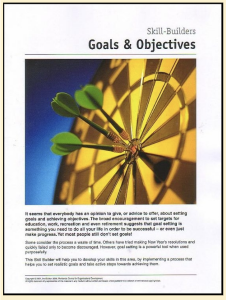Before you start
Ask the Lord where you need to focus your time and energy this year to accomplish the works He has created in advance for you to do. This is not simply a mental exercise – planning of this type is both strategic and spiritual. One of the best ways to incorporate your spiritual muscles is in Step #4 below.
5 Steps to Jumpstart Growth in Coaching Business

1. Capture Ideas
Take a piece of paper and write-out all of the activities that could help you build up your coaching practice. Your practice is unique to the person God has created you to be and the experiences you have; so take time to think through what will help you reach your vision to serve the client you are best-suited to serve. Here are a few ideas to get you started:
- Brainstorm a list of 100 prospective clients that you will contact this year
- Design a list of topics you will blog about to your constituents
- Create a profile of your ideal client
- Participate in specific gatherings where you can meet prospective clients
- Schedule one-to-one appointments to learn the needs of your ideal client
Brainstorming can open up new pathways that might not be so obvious at first. Take your time. Do your due diligence.
2. Get a Bird’s Eye View
Conduct a SWOT to assess your key business-building activities. A SWOT analysis provides you with perspective and insight to strategically answer the question: “What are the few really important things you can do this year that will build your coaching practice?” Here are a couple of ideas for your consideration:
- Invite someone into the conversation you trust to facilitate the exercise
- Ask a thought-partner that truly understands your vision to participate
- Do this in at least two different settings to give ideas time to percolate
Download our free Understanding Key Issues worksheet to help you organize this process.
3. Determine What Matters Most
This is where the rubber begins to meet the road! When you narrow in on the most important things you can do, your thinking will begin to shift from good ideas to actions you will be taking. Here are some business-building activities that have yielded strategic dividends for me in the past:
- Identify tasks that only you can accomplish
- Create a plan to delegate all tasks that others can do, for instance:
- Hire a virtual assistant to manage all-things administrative
- Sub-contract your bookkeeping and CPA responsibilities
- Find a competent web-designer to manage your website
- Schedule “white space” in your calendar for business-building think time
Tips for prioritizing
If you are struggling to prioritize issues then take a moment and match each of the options against each other. Once all of the pairings are made, conduct a vote with each pair, to identify which one will gain you the most traction in your coaching practice.
For instance, take the three items for delegate from above:
- Hire a virtual assistant to manage all-things administrative
- Sub-contract your bookkeeping and CPA responsibilities
- Find a competent web-designer to manage your website
You will compare each task against the other tasks according to which one makes strategic sense – meaning it is timely, affordable and logical.
- Given a choice between #1 and #2, which one makes strategic sense?
Put a tick by the item
- Given a choice between #1 and #3, which one makes strategic sense?
Put a tick by the item
- Given a choice between #2 and #3, which one makes strategic sense?
Put a tick by the item
Now count the number of ticks by each item under #1, #2, and #3. This is how you can break a tie when all items feel important
4. Plan Your Next Steps
Planning can be a challenging exercise when left to your own devices. This step in particular invites the Holy Spirit into the process. Here are a couple of ways to invite the Holy Spirit into this step:
- Pray for inner freedom
- Ask the Lord if you need any other information to make a decision
- Pray for inner freedom – again
For a more complete description of making a prayer decision, read this blog – CLICK HERE.
5. Stay on Track
Forming an accountability structure proactively guards your plans from entropy and unforeseen circumstances. Finding what you need to stay on track and then following-through is the power of accountability. Here are a few suggestions:
- Put the plans in your calendar with reminders
- Find an app like Todoist to track your progress
- Ask a trusted colleague to meet and discuss your progress and next steps
- Join a mastermind group
- Hire a coach
Another free download you might find helpful is our Action Plan Evaluation worksheet.
How can we help you?
The five steps outlined above essentials for building your coaching practice. We want to provide as much assistance to you at this time of year so you get off to a good start in 2024. If you are interested in a coach mentor relationship with the goal of increasing your impact by building your Christian coaching practice please complete this simple form and we will be in touch – CLICK HERE.
Resources
Photo by Glenn Carstens-Peters on Unsplash
Cover Photo by Daniel Öberg on Unsplash



